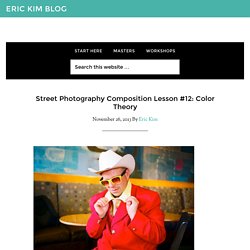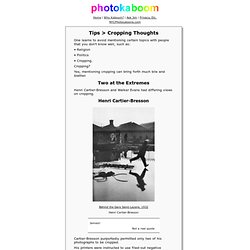

Goethe on the Psychology of Color and Emotion. Color is an essential part of how we experience the world, both biologically and culturally.

One of the earliest formal explorations of color theory came from an unlikely source — the German poet, artist, and politician Johann Wolfgang von Goethe, who in 1810 published Theory of Colors (public library; public domain), his treatise on the nature, function, and psychology of colors. Though the work was dismissed by a large portion of the scientific community, it remained of intense interest to a cohort of prominent philosophers and physicists, including Arthur Schopenhauer, Kurt Gödel, and Ludwig Wittgenstein. One of Goethe’s most radical points was a refutation of Newton’s ideas about the color spectrum, suggesting instead that darkness is an active ingredient rather than the mere passive absence of light. YELLOWThis is the color nearest the light. It appears on the slightest mitigation of light, whether by semi-transparent mediums or faint reflection from white surfaces.
Street Photography Composition Lesson #12: Color Theory. Eric Kim, Downtown LA 2012.

For today’s compositional lesson– I want to talk about color theory— and how you can better utilize colors when it comes to your street photography. Personally around 2 years ago, I made the switch from shooting fully black and white — to just shooting color film (Kodak Portra 400). Since then, I have learned to see the world in a totally different way. It has been fun, refreshing, and quite exciting. Moses Harris’s 1766 chart, one of 100 diagrams... The congolese sape h�ctor mediavilla.
The Surprising Sartorial Culture Of Congolese 'Sapeurs' : The Picture Show. Hide caption A sapeur poses for a photo while a crowd waits in line for a concert organized by KVV Mouzieto, an important sapeur who lives in Paris, to promote his first music album.

The ministry of communication and many sapeurs were invited for the event. Hector Mediavilla/Picturetank Hide caption Severin Mouyengo, who has been a sapeur since the 1970s, poses in the entrance of his family house in the Bacongo neighborhood. Sandals on the ground are from his family members. Hector Mediavilla/Picturetank Hide caption A sapeur named Lamame leaves his home, which has remained in poor condition since the last civil war (1997-2001), to show off in his neighborhood on a Sunday afternoon. Hector Mediavilla/Picturetank Hide caption Lamame cleans his shoes with a tissue; his pipe lies on a blue plastic table of a cafe-bar in Avenue Matsoua. Captured: America in Color from 1939-1943 – Plog Photo Blog. Posted Jul 26, 2010 Share This Gallery inShare324.

William Eggleston. American Color Archives. William Eggleston – “TateShots” (2014) The Congolese Sape. 10 Things Henri Cartier-Bresson Can Teach You About Street Photography. Don’t forget to pre-order the new re-print of “The Decisive Moment” by Henri Cartier-Bresson!

I have been doing quite a bit of research into Henri Cartier-Bresson, the godfather of street photography. Although my current approach in street photography is more like Bruce Gilden and less of Henri Cartier-Bresson, HCB influenced much of my earlier work and I still deeply respect his photography and philosophies. I hope you are able to enjoy these things I believe you can learn from Henri Cartier-Bresson about street photography.
Keep reading to become inspired and learn more. 1. If you look at the work of Henri Cartier-Bresson, he applied geometry to his images poetically. Don’t only see the world as it is, look for shapes and geometry that occur naturally as well. 2. When Henri Cartier-Bresson would talk about “The Decisive Moment” he said sometimes it would be spontaneous but others times he had to be patient and wait for it. Tips > Cropping Thoughts. One learns to avoid mentioning certain topics with people that you don't know well, such as: • Religion • Politics.

Photography: is it art? For 180-years, people have been asking the question: is photography art?

At an early meeting of the Photographic Society of London, established in 1853, one of the members complained that the new technique was "too literal to compete with works of art" because it was unable to "elevate the imagination". This conception of photography as a mechanical recording medium never fully died away. Even by the 1960s and 70s, art photography – the idea that photographs could capture more than just surface appearances – was, in the words of the photographer Jeff Wall, a "photo ghetto" of niche galleries, aficionados and publications. 6 Ways to Use Color for Eye Catching Compositions. A painter only needs to look at their palette before applying color to the canvas.

Photographers have a different challenge, as they must locate their tones by studying a scene. Pinterest. Henri Cartier-Bresson. 10 Top Photography Composition Rules. There are no fixed rules in photography, but there are guidelines which can often help you to enhance the impact of your photos.

It may sound clichéd, but the only rule in photography is that there are no rules. However, there are are number of established composition guidelines which can be applied in almost any situation, to enhance the impact of a scene. These guidelines will help you take more compelling photographs, lending them a natural balance, drawing attention to the important parts of the scene, or leading the viewer's eye through the image. Once you are familiar with these composition tips, you'll be surprised at just how universal most of them are.
You'll spot them everywhere, and you'll find it easy to see why some photos "work" while others feel like simple snapshots. Rule of Thirds Imagine that your image is divided into 9 equal segments by 2 vertical and 2 horizontal lines. Doing so will add balance and interest to your photo. Balancing Elements Leading Lines. Composition. The Skill of Composition.